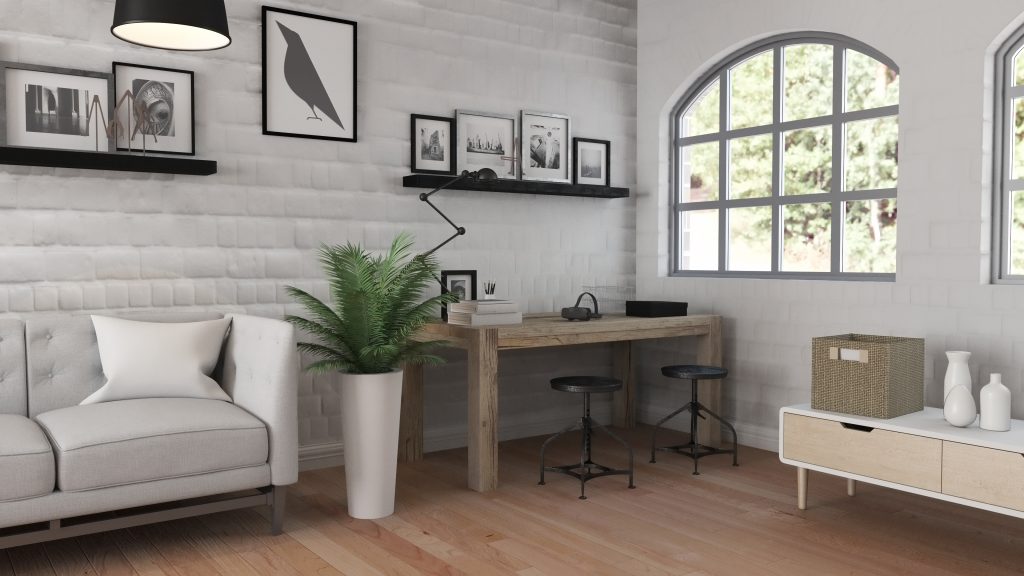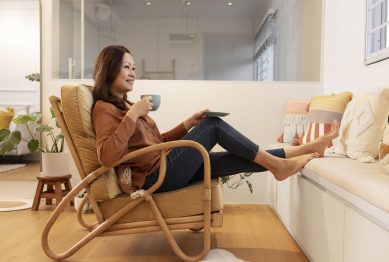Living in smaller homes or apartments has become more common in many cities around the world. With rising real estate costs and a growing movement toward intentional, minimalist living, people are learning to make the most of every square foot. The good news is that living small no longer means sacrificing comfort or style. Designers are using creativity and innovation to shape compact homes that feel open, functional, and beautiful. In 2025, interior design that maximizes small spaces has emerged as one of the hottest topics in the design world, blending functionality, emotional impact, and sustainability.

Why Small-Space Design Matters
Urban centers are becoming denser, and with that, living spaces are shrinking. Whether it’s a 500-square-foot apartment in New York, a compact Tokyo studio, or a micro-loft in Paris, people want solutions that make small living practical and stylish. Small-space design is no longer just about fitting furniture into a room—it’s about shaping an environment that feels expansive, personal, and even inspiring. By rethinking layouts, materials, and design choices, interior design that maximizes small spaces creates homes that feel larger than they are.
Multifunctional Furniture: The Heart of Small Living
Furniture that does double or even triple duty has become essential. Multifunctional furniture allows homeowners to create flexible spaces that shift depending on their needs. A sofa that transforms into a bed, a dining table that folds into the wall, or ottomans with hidden storage are staples of modern small-space living. In 2025, innovation is taking this further with smart furniture that integrates technology—charging stations hidden in desks or modular couches that can be rearranged to suit social gatherings or solo relaxation. This is one of the clearest examples of interior design that maximizes small spaces by blending practicality with modern living.
Track Shelving and Vertical Solutions
When floor space is limited, walls become your best friend. Track shelving systems are one of the most effective storage strategies because they are modular and customizable. Instead of heavy built-in cabinetry, these systems allow for adjustable shelves, hooks, and panels that can evolve as your needs change. Styling them thoughtfully—with space between items and cohesive colors—prevents them from looking cluttered. Vertical storage also draws the eye upward, making rooms feel taller. By using wall space effectively, interior design that maximizes small spaces keeps homes tidy without reducing personality.
Flooring Tricks for Expanding Visual Space
Designers are increasingly using flooring to manipulate the perception of size. Large-format tiles, long planks, and uninterrupted flooring that flows from one room to the next all help create the illusion of a larger interior. Light colors and matte finishes reflect natural light, amplifying the sense of openness. Even the way planks are laid matters—diagonal or lengthwise installations guide the eye outward, making the room appear more expansive. Flooring might not be the first thing people think of, but it has become an essential element of interior design that maximizes small spaces.
Emotional Architecture: More Than Just Aesthetics
A major trend in 2025 is emotional architecture, which focuses on how spaces make us feel. Designers are integrating principles of neuroaesthetics—such as circadian lighting, natural textures, and calming colors—into even the smallest homes. The goal is to create environments that feel safe, energizing, and restorative. This is particularly important for small homes, which can easily feel cramped if not designed thoughtfully. By choosing natural woods, biophilic design elements, and warm lighting, homeowners can transform compact spaces into calming sanctuaries. Emotional architecture shows that interior design that maximizes small spaces can also enhance mental and emotional well-being.
Making Bold Statements Without Overcrowding
Small homes don’t need to avoid bold design choices. The trick is to focus on one or two impactful features instead of filling the space with many competing details. Oversized pendant lights, a large framed artwork, or a dramatic ceiling treatment can give a room personality while keeping the rest of the decor simple. Cohesive color schemes and repeating textures tie everything together. This balance prevents visual clutter and demonstrates that small spaces can still have a strong design identity. It’s another example of how interior design that maximizes small spaces can be both functional and expressive.
Personalized Touches and Storytelling
In compact living environments, every item counts. Designers encourage homeowners to showcase objects that have personal meaning rather than cluttering rooms with generic decor. A carefully placed heirloom, a set of travel photographs, or a collection of books can make a home feel unique. This trend leans toward intentional living—choosing fewer but more meaningful pieces. Small spaces, when curated well, can actually feel more personal and reflective of identity than larger homes. Personal storytelling is increasingly central to interior design that maximizes small spaces.
Sustainable Design in Compact Living
Sustainability is no longer optional in design. For small spaces, eco-conscious choices are practical as well as ethical. Energy-efficient lighting, low-VOC paints, recycled materials, and modular furniture made from sustainable wood all contribute to healthy, environmentally friendly interiors. Compact spaces naturally consume fewer resources, but thoughtful design ensures that they are also healthier for the people living in them. Sustainability and small-space living are closely aligned, reinforcing the idea that interior design that maximizes small spaces can also minimize environmental impact.
Minimalism with Warmth: Japandi and Industrial Fusion
Minimalism continues to influence small-space design, but in 2025 it is evolving into warmer, more inviting styles. Japandi, a fusion of Japanese and Scandinavian aesthetics, emphasizes simplicity while incorporating natural textures, soft lighting, and warm tones. Similarly, industrial-inspired interiors—featuring raw materials like brick, metal, and concrete—are being adapted into cozy, compact homes through layering textiles and adding greenery. Both approaches balance function with comfort, making them prime examples of interior design that maximizes small spaces while retaining character.
Case Studies in Small-Space Mastery
Designers around the world are showcasing remarkable transformations in small homes. In Paris, a 657-square-foot Haussmann apartment was redesigned with open layouts, mirrors to enhance depth, and multifunctional furniture, creating a home that felt elegant and spacious despite its size. In another example, a compact bathroom was reimagined with strategic mirror placement, greenery, and unconventional layouts, showing how creative risk can make a space feel larger. These projects highlight how innovation and bold thinking fuel interior design that maximizes small spaces.
Practical Tips for Small-Space Success
If you’re looking to make your compact home more functional and stylish, here are a few practical strategies:
- Use multifunctional furniture such as fold-out desks or sleeper sofas.
- Install track shelving or floating shelves to free up floor space.
- Choose seamless, light-colored flooring to create openness.
- Incorporate natural textures and plants for emotional balance.
- Add one bold design feature per room for personality.
- Curate personal items with meaning instead of cluttering with decor.
- Opt for sustainable materials whenever possible.
- Blend minimalist styles with warm elements for comfort.
- Maximize natural light with sheer curtains and mirror placement.
Conclusion
Interior design that maximizes small spaces is no longer about compromise—it’s about creativity and intention. In 2025, designers are redefining how compact living works, showing that small homes can be efficient, comfortable, sustainable, and expressive. With multifunctional furniture, vertical solutions, smart flooring, and emotional design principles, even the tiniest apartment can feel expansive. Small-space living is shaping the future of interior design, and it proves that great design is not about square footage but about how well space is used.
References
- 6 Trends Defining Home Décor in 2025, https://www.whowhatwear.com
- The Everyday Design Feature That Quietly Makes Small Spaces Feel Custom, https://www.housebeautiful.com
- The Most Popular Interior Design Styles of 2025, https://levtexhome.com









